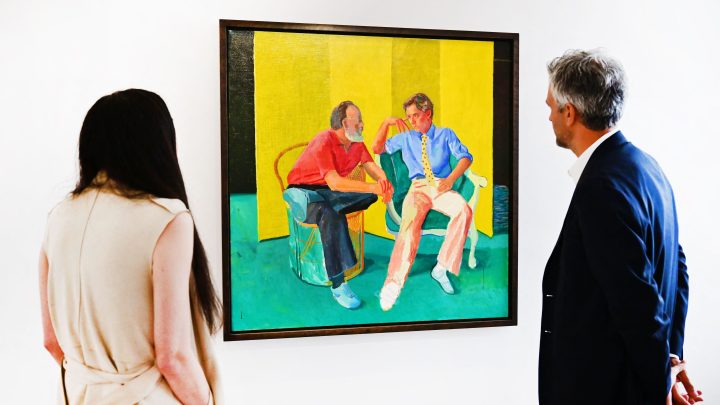
Fine art: a playground for the superrich

In November, “Les Poseuses, Ensemble (Petite version)” by Georges Seurat was sold to the tune of $149.24 million. It claimed the title of most valuable piece sold at the historic, record-breaking auction of Microsoft co-founder Paul Allen’s $1.5 billion collection. But after a year of explosive bidding, have prices in the art market hit their peak?
Lisa Austin, a fine art adviser, gave us a sneak peek into what she called “a playground for the superwealthy.” Austin spoke with “Marketplace” host Kai Ryssdal about skyrocketing prices in the art market and whether a slowdown has arrived.
Kai Ryssdal: Give me a thumbnail sketch of the fine art market in this economy right now.
Lisa Austin: The fine art market for the last couple of years has been roaring. What we have seen, particularly with the high-net-worth individual — which is, you know, the core of the art market — is that they’ve made more money this year and they have more money than ever before. So what we’ve had now is a really robust, almost irrationally exuberant market.
Ryssdal: [Laughs.] I chuckled because we all know what happened after Alan Greenspan said things were irrationally exuberant. How long, right? I mean, how long can this last in the art market?
Austin: I think till just now — that’s what we’re hearing. I mean, I looked at the auctions. And of course, the Paul Allen auction was a blockbuster.
Ryssdal: The guy who helped found Microsoft, yeah.
Austin: Exactly. So he’s kind of a famous guy. He had a stellar collection — things that you very rarely see on the market. And so all of those wonderful, you know, that confluence of great events, you know, it had achieved $1.5 billion, which was the highest-ever total for a single collection ever sold. So it was amazing. But that kind of sucked a little of the air out of the room. And the rest of the auctions were strong, but they weren’t blockbusters. And so the rest of the auctions being the evening sales and the daytime sales for Christie’s, Sotheby’s and Phillips, which are the big three.
Ryssdal: Why does it seem that art prices never come down? They just keep going up, or is that just me? I mean, look, I’m a peripheral observer of this market. But it does seem that you see records all the time, and you never see things like, you know, prices have cratered in the fine art market.
Austin: Well, I mean, it’s a pretty controlled market. So you may not see prices cratering, let’s say, at the gallery level. But you might see negotiation go up, you might see the discounts get bigger. So where at auction, you do see prices come down — which is one of the kind of the nerve-wracking elements of sending something to auction.
Ryssdal: I guess the moral of the story there is that rich people are looking for a bargain, just like the rest of us, right?
Austin: Correct. They like it just as much, if not more, than anyone else.
Ryssdal: You know, I was doing an interview on the runway shows, high fashion and haute couture a number of years ago, and the woman I was interviewing, I said, “You know, why does this matter to the regular person?” And she said, “Look, what shows up on the runways — especially now in this era of fast fashion — shows up at H&M and Target and all the rest of them weeks or months later.” And it all kind of trickles down. Is there a corollary here with the art market?
Austin: I really don’t think so. This is really a playground for the superwealthy. Even an entry-level artist might be $20,000 or $30,000, which we in the market now say, “Oh, that’s great. That’s a great piece — $20,000, $30,000, $40,000.” That’s a lot of money for an average person. That’s not the H&M buyer.
Ryssdal: OK, so I don’t want to, you know, hazard a guess one way or the other about the next six to eight months in this economy, but there are rumors and predictions and thoughts that maybe there’s going to be an economic slowdown, perhaps even a recession. Does that do anything to the art market?
Austin: It will, even if it’s just perception. Because what I’m hearing, you know, from dealers who were there and from some of the auction house representatives is that the froth seems to be gone. Sales are satisfying, but there is going to be more opportunity to get access to certain artists that you couldn’t get before. But from what I’m hearing and seeing from everyone, they all feel like it’s moving into a more subdued kind of market.
There’s a lot happening in the world. Through it all, Marketplace is here for you.
You rely on Marketplace to break down the world’s events and tell you how it affects you in a fact-based, approachable way. We rely on your financial support to keep making that possible.
Your donation today powers the independent journalism that you rely on. For just $5/month, you can help sustain Marketplace so we can keep reporting on the things that matter to you.

















